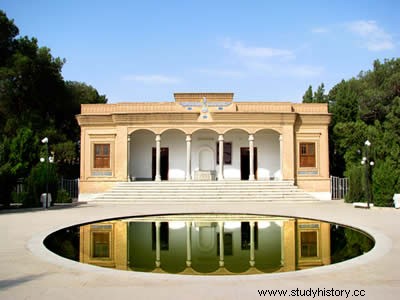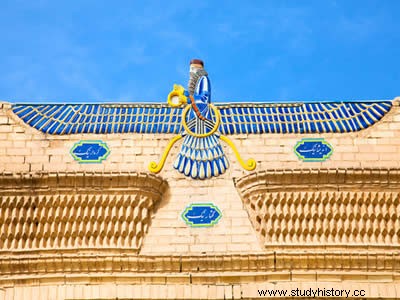
By Tales Pinto
The ancient Persian religion, known as Masdeism , was mainly characterized by the duality between good versus evil, forces represented by the two main gods:Ahura-Mazda (or Ormuz-Mazda) and Ahriman (or Angro Mainyush). The principles of Masdeism were compiled in Zend-Avesta (or even Avesta).
The duality of Masdeism placed Ahura-Mazda as the god of good and light, and his worship ritual is known as the Rite of Fire, in which the priests chanted hymns and kept the lights lit. flames as a representation of the permanence of the Ahura-Mazda force. These rituals did not require temples to be performed.
On the other hand, Ahriman was seen as the deity of evil and darkness that had to be fought. The two gods were always in combat, and the worship of Ahura-Mazda was what ensured that evil did not triumph. This would happen if individuals did not always tell the truth and were not kind to others.
Masdeism still preached the existence of life after death, indicating the existence of a paradise for the righteous and a purgatory and hell for sinners. The teachings of Masdeism were compiled by the prophet Zoroaster (or Zarathustra) who lived around 628 BC. and 551 BC. The name of the prophet led to the religion also being known as Zoroastrianism .
Zoroaster would have constituted Masdeism from the fusion of its teachings with the popular beliefs of the different locations of the Persian Empire. The Persian Emperor would be the representation of the god of good on Earth, from whom he had received power, commanding the people in the fight against evil. In the case of the best-known Persian emperor, Darius I, Ahura-Mazda would have given him wisdom, understanding, reasoning, the ability to be a military commander and to distinguish the good from the bad.
Such a perspective of understanding the formation of Masdeism also makes it possible to perceive that the Persian religion was linked to the relationship established between the elite close to the kings and the various peoples that were subjugated during the expansion of civilization Persian in Antiquity. The fusion of the different religions to the dualistic essence of Masdeism would be a way of guaranteeing the unity of the kingdom and the connection of the different peoples to the central authority of the Emperor. Through religion, one more element was obtained to guarantee political unity.

Image of Ahura-Mazda at Ateshkadeh Fire Temple in Yazd, Iran
In this sense, there are historiographical controversies about the existence of a religious tolerance on the part of the Persian kings, mainly Darius I and Xerxes. Some historians indicate the acceptance of cults other than Mazdeism by these kings, but other historians point out the intransigence of the two and the attempt to impose Mazdeism on the various subjugated peoples. The controversy is a result of the various existing sources and on the ways to interpret them.
Masdeism remained popular in Persia probably until the Islamic invasion in the 7th century. In Iran, the current name for Persia, less than 1% of the population is a practitioner of Masdeism. Most contemporary adherents of Masdeism are in India, where they are known as Parsis , the Persians.
Take the opportunity to check out our video lesson related to the subject:
